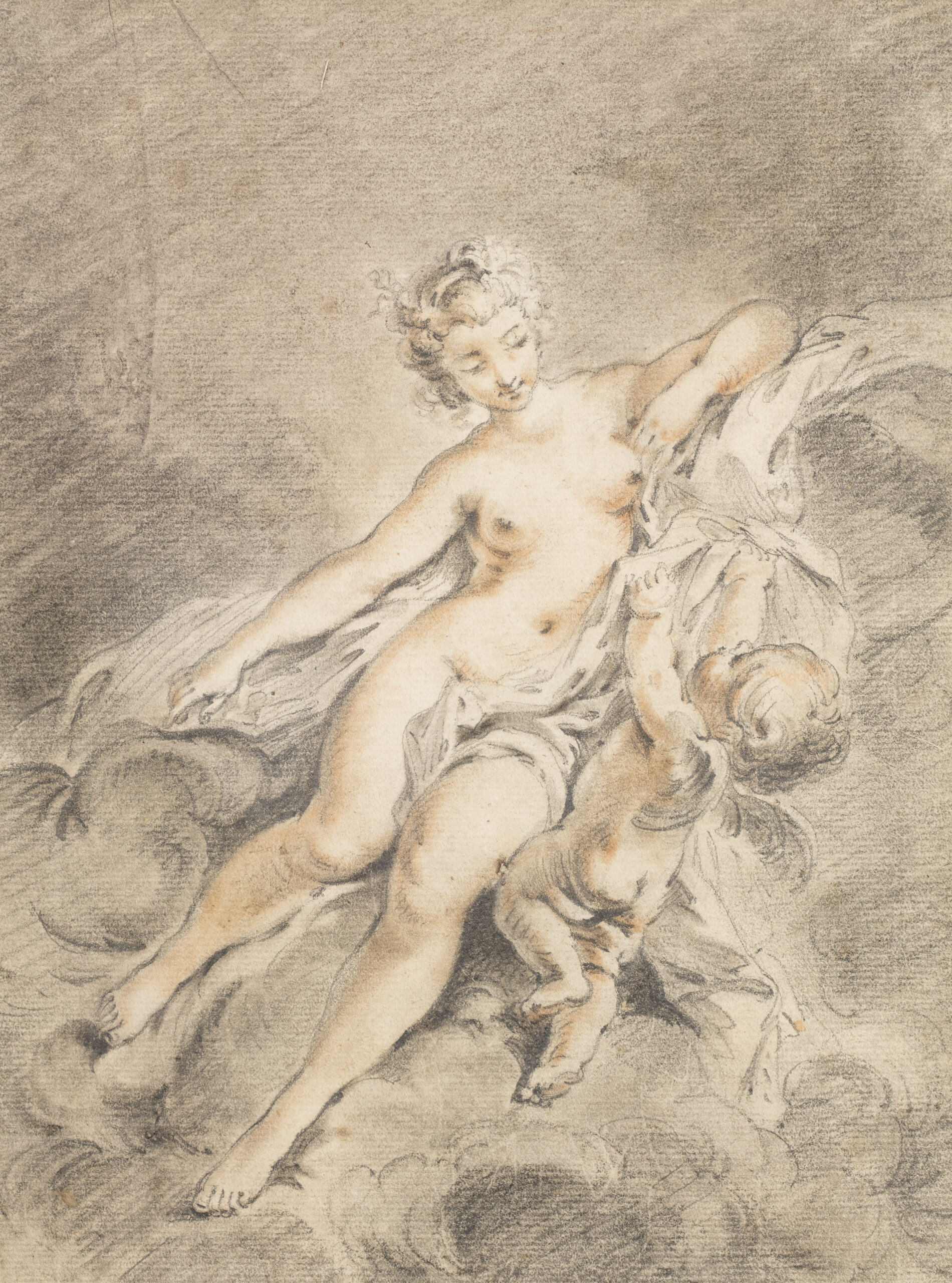Born in Paris on September 29, 1703, François Boucher emerged from an artistic cradle as the son of Nicolas Boucher, an ornamentalist and print merchant. At just seventeen years old, he entered the service of illustrious masters such as François Lemoyne and Jean-François Cars, where he learned decorative painting and engraving. His first major recognition came in 1723 when he won the Grand Prix des Arts, a victory that launched him into a promising career.
Boucher traveled to Rome in 1727, accompanied by Carle Van Loo. There, he discovered the art of the great masters, particularly Tiepolo, and refined his style. His return to Paris in 1731 marked the beginning of a series of successes. Admitted to the Royal Academy of Painting and Sculpture, he quickly became a respected history painter, especially with his iconic work “Renaud and Armide,” which earned him academic status in 1734.
In 1734, he married Marie-Jeanne Buseau, a miniaturist who became both his model and muse. As Boucher established himself as the painter of Parisian salons, he was also entrusted with prestigious commissions by Madame de Pompadour, the favorite of Louis XV. With her support, he decorated royal residences and contributed to the prosperity of the Beauvais and Gobelins manufactories, further solidifying his position within the aristocracy.
His art, a true reflection of the frivolity and elegance of the 18th century, immerses the viewer in mythological and pastoral worlds, where feminine beauty is celebrated with enchanting lightness. Boucher excelled in depicting idyllic scenes, where shepherds and shepherdesses brush against each other in idealized landscapes, far removed from the concerns of daily life. His works, such as “The Toilet of Venus” and “The Forge of Vulcan,” demonstrate his skill in marrying sensuality and refinement.
François Boucher passed away on May 30, 1770, leaving behind a prolific body of work that continues to dazzle and captivate.

Sign up to the newsletter and stay informed about our latest acquisitions and exhibitions:
© Galerie Rousset 2023